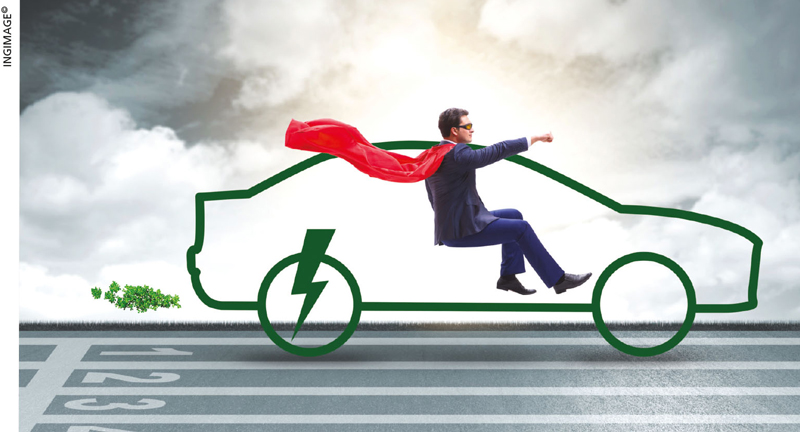MOTOR INDUSTRY
A FISCAL FILLIP FOR AUTOS
Randima Attygalle reports on the need for a consistent motor industry policy
“Over the years, our vehicle policy has been neither clean nor green. We propose all vehicles in the country to be powered by non-fossil fuel sources by 2040. To this end, all government vehicles will be converted to hybrid or electrical vehicles by 2025,” remarked Minister of Finance and Mass Media Mangala Samaraweera in his Budget 2018 speech.
Although this is an ambitious plan, it would undoubtedly lead to a watershed in the country’s motor industry should it materialise. After all, the motor industry remains one of the most volatile enterprises here in Sri Lanka.
The motor industry’s gravest concern has been the inconsistent mechanism for levying import duties. Changes in taxation are often perceived in many quarters to be ad hoc in nature, and coloured by the whims and fancies of the regime in power. The recent introduction of an upfront payment for letters of credit that has done away with the grace period is viewed by many stakeholders to be a fresh blow to the industry.
Budget 2018 introduced a system whereby customs duty is levied on the cubic capacity (cc) of an engine, replacing the traditional calculation based on the cost, insurance and freight (CIF) value of a vehicle.
“The benefit of this system is that it is completely transparent and fair as an importer of a vehicle of a similar cubic capacity pays the same duty,” says the Managing Director of Innosolve Lanka Sheran Fernando.
Fernando adds: “Segments of the industry argue that this is inequitable because both a higher and lower value vehicle attract the same duty. The justification of the system is that from a national perspective, the government provides motorists with clean air and roads – and thus, a cc based duty system is equitable as the cubic capacity of an engine governs the air used and pollution caused.”
The new formula based on engine capacity is envisaged to “minimise revenue leakages,” as the finance minister noted in his budget speech last November.
While import taxes on an electric vehicle will be reduced by at least Rs. 1 million, the import tax on high end fossil fuel vehicles will be increased by almost 2.5 million rupees. A special tax on super luxury vehicles with an engine capacity exceeding 2500cc is also being imposed. While mitigating the outflow of foreign exchange, the move is aimed at cutting annual fuel expenditure substantially.
To streamline the secondhand vehicle market and unroadworthy vehicles in the country, Fernando proposes a system of homologation. As he explains, this will ensure that imported vehicles conform to national standards and are deemed to be suitable. “However, the process of homologation must be properly drawn out and transparent,” he asserts.
Striking a balance between purchasers’ incomes and the purchase price of vehicles remains a complicated issue for which policy evaluation is required, says Fernando. He explains that “people need vehicles because the public transport system offers limited solutions.”
“Vehicles lead to congestion and very long travel times especially within cities. The government requires revenue from motor vehicle duties. On the other hand, it also needs to monitor its balance of payments. Policy will need to evaluate these variables,” he adds. One of the most vulnerable industries where taxes are concerned, the local motor trade’s stiffest challenge according to Dilrukshi Kurukulasuriya – Chief Human Resources Officer of Diesel & Motor Engineering (DIMO) – is its inability to plan for the long term as the duty system changes each year.
Kurukulasuriya asserts that this predicament results from the inability to project ROIs. It includes investment in infrastructure, creating new jobs and keeping people employed, as well as sustaining the business, she says.
The entry of third parties into the vehicle dealer network and motor industry is expanding beyond purchasing, which requires players to align themselves with evolving challenges. And as Kurukulasuriya notes, “competition and new entrants to any business are inevitable. This is where strategy plays a role in the market.”
Honing and retaining skilled labour in the industry, and keeping abreast of technology, are also imperatives today. Kurukulasuriya observes: “Today, more and more dealers understand the requirement to provide after sales services and therefore, invest in infrastructure and create a sustainable talent pipeline by committing to skills development.”
Amid the rapidly growing environmental consciousness at the global level, the industry is calling for a reduced carbon footprint with interventions, and eco-friendly products and practices. This is expected to create value for the industry, economy and environment.
However, it is worth pointing out that the presence of such environmentally friendly products alone would serve little purpose without the appropriate infrastructure also being in place.




